Vietnamese cuisine is popular for its rich and flavorful dishes, often featuring a combination of fresh herbs, spices, and vegetables. One of the many dishes that make up this cuisine stands out as a true classic: Hanoi soup.
Locals and visitors have loved this delicious Vietnamese delight in the capital city of Hanoi for many years. Hanoi soup is a hearty and satisfying dish that combines a savory broth with tender noodles, succulent meat, and a variety of other ingredients to create a meal that is both delicious and nourishing.
We will delve into the history and origins of Hanoi soup, exploring its key ingredients and preparation techniques. We will also provide a step-by-step recipe that you can follow to recreate this classic dish at home, complete with tips and tricks for getting the most out of your ingredients.
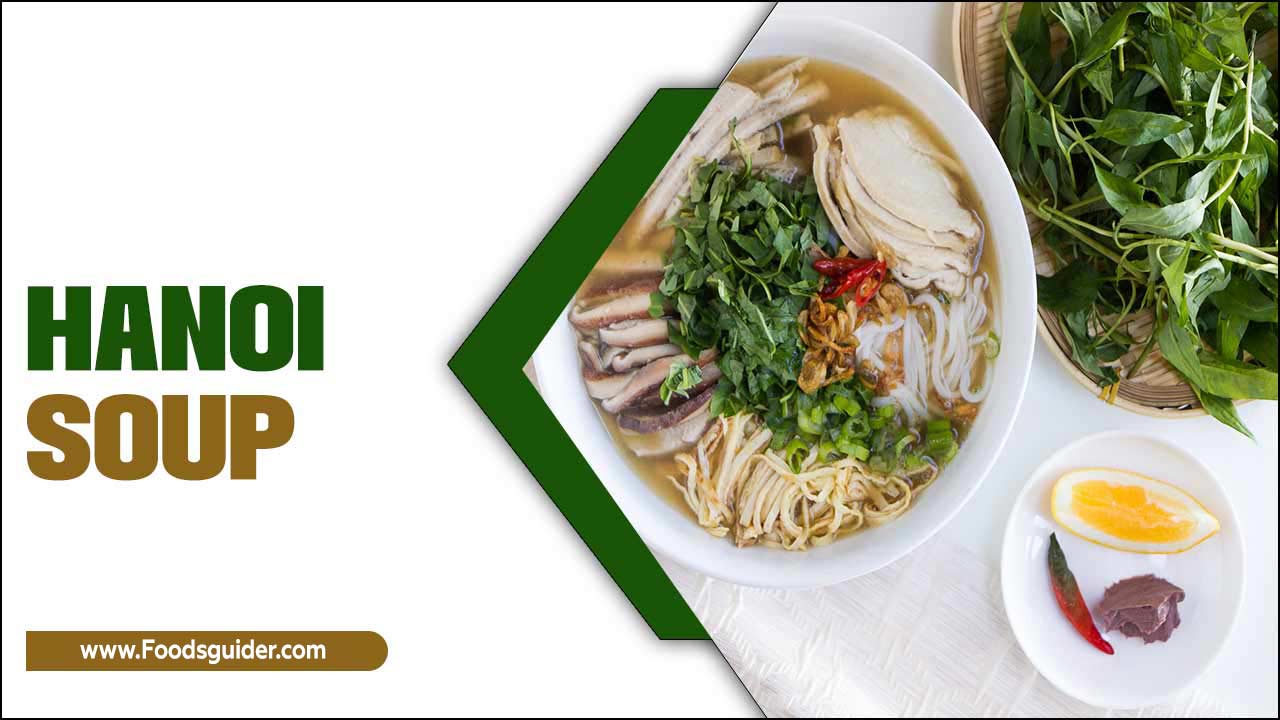
Savory Hanoi Soup Exploring Vietnamese Cuisine
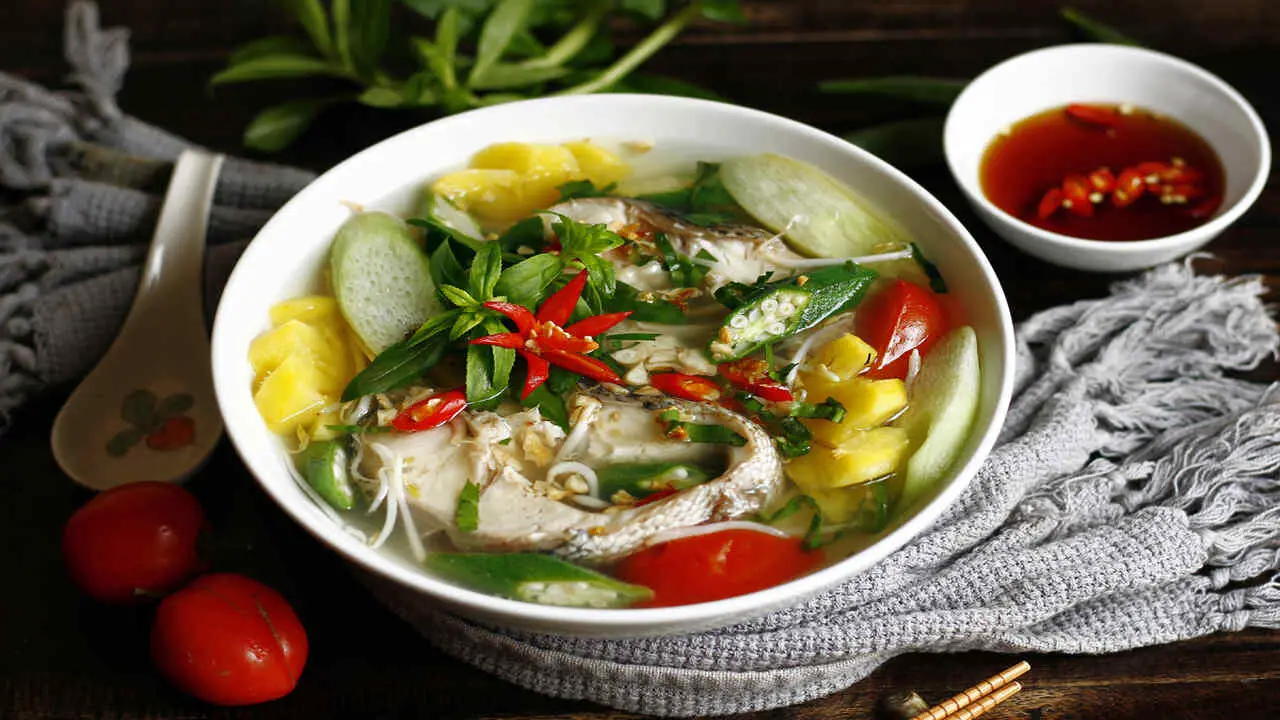
Savor the rich flavors of Hanoi Soup, a traditional Vietnamese delight popular as Pho. Originating in Hanoi, this iconic dish features a flavorful broth simmered for hours with aromatic spices, combined with rice noodles and your choice of meats or vegetables.
They garnish each bowl of pho, whether beef, chicken, or vegetarian, with fresh herbs, bean sprouts, lime, and chili sauce for flavor and texture. Indulging in a bowl of Hanoi Soup satisfies your taste buds and immerses you in the vibrant culture and heritage of Vietnam.
The Origin of Hanoi Soup
Originating in Northern Vietnam, Hanoi soup, also popular as “pho,” has become a beloved staple dish in the capital city of Hanoi. This flavorful soup traditionally comes with rice noodles, beef or chicken broth, and a medley of aromatic herbs and spices.
Influenced by both Chinese and French culinary traditions, Hanoi soup has gained worldwide popularity for its rich and aromatic flavors. Whether you’re a local or a visitor, enjoying a bowl of Hanoi soup is a must-do to fully immerse yourself in the vibrant food culture of Vietnam’s capital city.
Ingredients Needed for Hanoi Soup
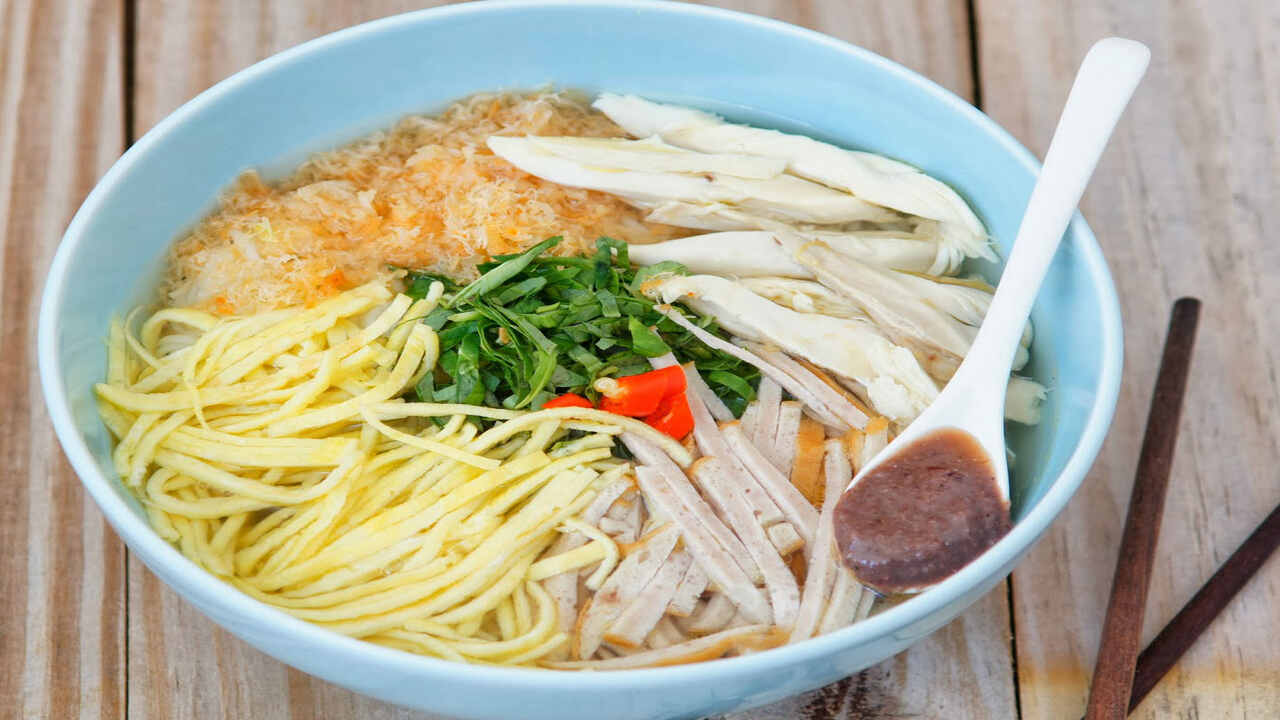
To make a delicious bowl of Hanoi Soup, start with a rich and flavorful beef or chicken broth. Add in rice vermicelli noodles for that perfect texture. Thinly sliced beef or chicken is the ideal choice for protein, while fresh herbs like cilantro, basil, and mint add a burst of freshness.
Crunchy bean sprouts provide a nice contrast and don’t forget to squeeze some lime juice for a tangy element. These ingredients come together to create a delightful bowl of Hanoi Soup.
Main Ingredients
Traditional Hanoi soup features rice noodles, tender beef or chicken, and fresh herbs. Alongside these staples, you’ll often find bean sprouts, lime wedges, and sliced onions as common additions. The fragrant broth, which lends its irresistible flavor to the dish, comes from fish sauce, garlic, ginger, and spices.
Using only the freshest ingredients, the authentic flavors of Hanoi soup can shine through, creating a harmonious balance of flavors and textures in every spoonful.
Additional Ingredients for Flavoring
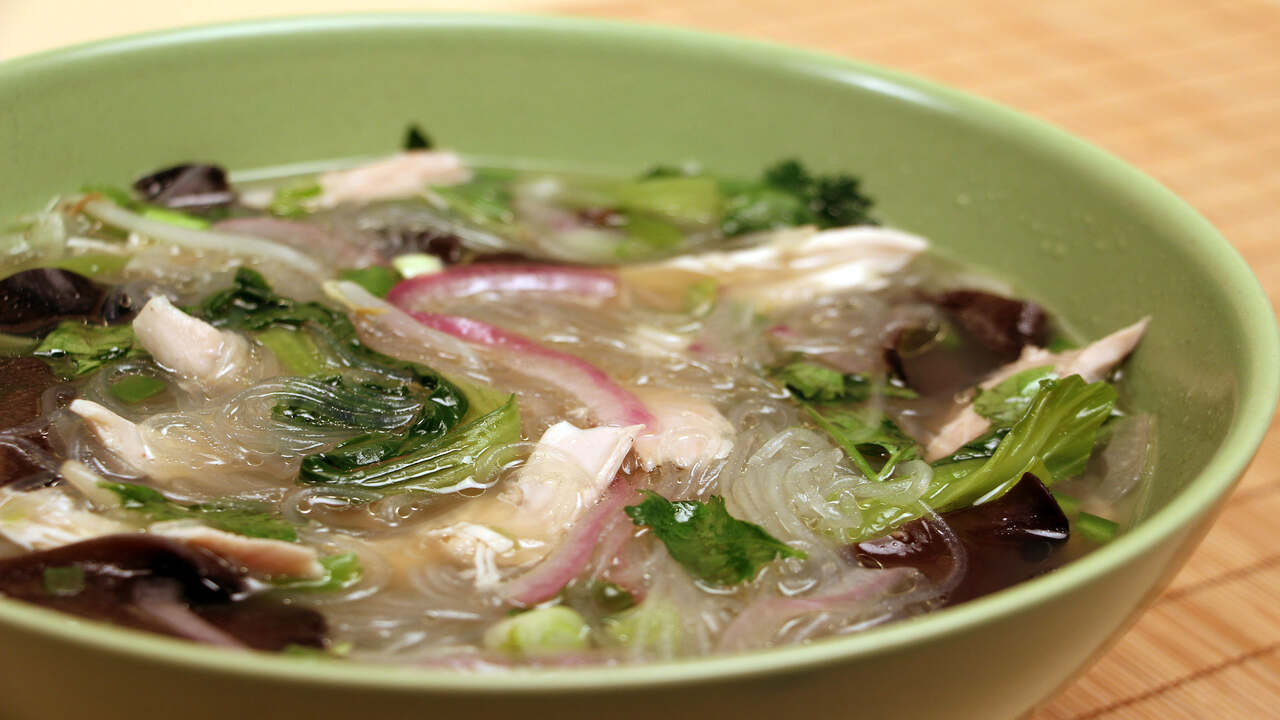
You can add additional ingredients to enhance the flavors and depth of Hanoi Soup. Common flavoring elements such as fish sauce, lime juice, chili peppers, and garlic are often handy, along with the key ingredients of rice noodles, beef or chicken, bean sprouts, and fresh herbs.
You can also add sliced onions, green onions, and chilies for extra flavor and heat. Some variations may incorporate ingredients like shrimp paste or fried tofu for added texture and taste.
Preparing the Broth
To prepare the broth for Hanoi Soup, simmer bones and meat for several hours. This slow-cooking process helps create a rich and flavorful base for your soup. Enhance the taste of the broth by adding aromatic spices like star anise, cinnamon, and cloves.
As the broth simmers, skim off any impurities that rise to the surface to maintain a clear and clean broth. Once the simmering is complete, strain the broth to remove any solid particles, leaving behind a smooth and silky base. Finally, adjust the seasoning with fish sauce, sugar, and salt to achieve the perfect balance of flavors.
Cooking the Beef
For a delicious bowl of Hanoi Soup, start by choosing a tender cut of beef, like sirloin or tenderloin. Slice the beef thinly against the grain to ensure tenderness. Marinate the beef with traditional Vietnamese flavors such as fish, garlic, and soy sauce. Cook the beef quickly over high heat to retain its juiciness and flavor. Just before serving, add the cooked beef to the simmering broth for the perfect bowl of Hanoi Soup.
Adding the Noodles
To complete your Hanoi Soup, cook the noodles according to package instructions until they are al dente. Once cooked, drain the noodles and rinse them with cold water to stop the cooking process. Next, add the cooked noodles to the pot of simmering soup.
Let the noodles simmer in the soup for a few minutes to absorb the flavors before serving. This step will ensure your Hanoi Soup is complete with delicious and perfectly cooked noodles.
Final Touches to the Soup
Squeeze in some fresh lime juice to add a tangy kick to the soup. Enhance the flavor and aroma by garnishing with fresh herbs like cilantro or Thai basil. Top the soup with crispy fried shallots or onions for a satisfying crunch. Drizzle a few fish or soy sauce drops to enhance the savory taste. Remember to serve the Hanoi soup piping hot and savor its comforting flavors.
How to Serve Hanoi Soup?

When it comes to serving Hanoi soup, there are a few key steps to follow to ensure the best dining experience. First, heat the soup until it is piping hot and ready to serve. Next, ladle the soup into individual bowls, including a generous amount of noodles, broth, and toppings.
Traditional toppings for Hanoi soup include bean sprouts, fresh herbs like cilantro and Thai basil, lime wedges, and thinly sliced chili peppers for added heat. Finally, serve the soup with condiments like hoisin sauce, sriracha, or fish sauce on the side so that each person can customize their bowl. With these simple steps, you can serve a delicious and authentic Hanoi soup that everyone will love.
Ideal Accompaniments With Hanoi Soup
When enjoying Hanoi Soup, several ideal accompaniments enhance its flavors and textures. Fresh herbs like cilantro, basil, and mint provide a burst of aroma and freshness. Bean sprouts and lime wedges add a refreshing crunch and tangy kick to the soup.
Add sliced chili peppers or a drizzle of sriracha sauce if you enjoy some heat. You can further deepen the flavors by using traditional condiments like fish and hoisin sauce. Pair Hanoi Soup with steamed rice or a crispy Vietnamese baguette to make it a satisfying meal.
Tips and Tricks for Perfect Hanoi Soup
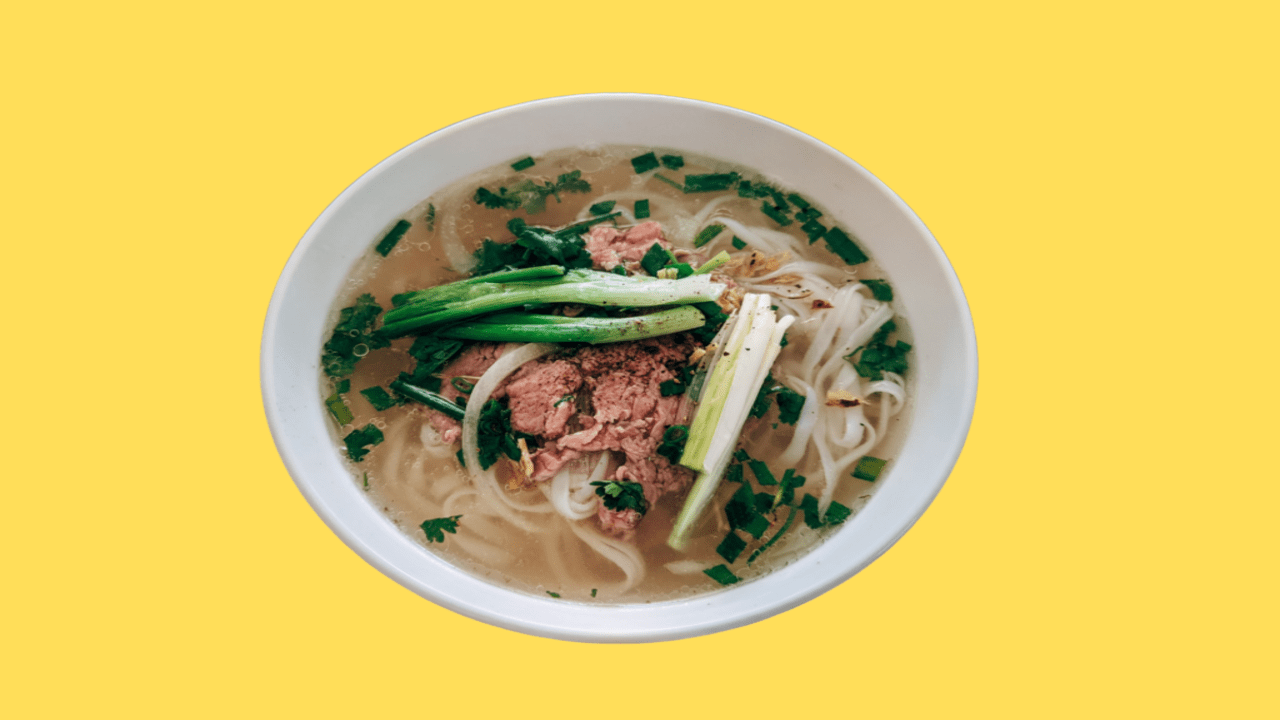
To create the perfect Hanoi soup, use fresh ingredients like herbs and vegetables to enhance the flavor. Slowly simmer the broth, allowing it to develop depth and richness. Achieve balance by combining sweet, salty, sour, and spicy elements.
Don’t forget to garnish your soup with traditional toppings such as lime wedges, fresh herbs, and bean sprouts. For variety, try experimenting with different protein options like chicken, beef, or tofu in your Hanoi soup.
Selecting The Right Ingredients
Regarding Hanoi Soup, selecting the right ingredients is crucial in creating an authentic and flavorful dish. Freshness is key, so opt for high-quality meats like chicken or beef to achieve a rich and robust flavor.
Don’t forget to include vegetables such as bean sprouts, herbs, and lime to infuse freshness and tang into the soup. Traditional ingredients like fish sauce and rice noodles are essential for that authentic taste. Feel free to experiment with different ingredient combinations to personalize your Hanoi Soup.
Conclusion
Hanoi Soup is a culinary masterpiece that showcases the flavors and culture of Vietnamese cuisine. Combining savory broth, tender beef, and flavorful noodles creates a harmonious and satisfying dish. To achieve the perfect Hanoi Soup, it is essential to use fresh and high-quality ingredients.
Pay attention to preparing the broth, cooking the beef to perfection, and adding the noodles at the right time. To enhance the flavors, serve the soup with traditional accompaniments such as bean sprouts, lime wedges, and fresh herbs. With these tips and tricks, you can recreate the authentic taste of Hanoi Soup in your kitchen and indulge in this delicious Vietnamese delight.
Frequently Asked Questions
1.What Is Hanoi Soup Called?
Ans: In Hanoi, the traditional soup is known as “Pho.” It is a popular Vietnamese noodle soup with flavorful broth and rice noodles. Typically served with thinly sliced beef or chicken, this delicious dish is garnished with fresh herbs, bean sprouts, and lime. Find authentic pho in local eateries throughout Hanoi.
2.What Is Vietnamese Soup Called?
Ans: Vietnamese soup is commonly known as “pho.” It is a traditional noodle soup with flavorful broth, rice noodles, and various toppings. Other popular Vietnamese soups include bun bo Hue (spicy beef noodle soup) and mi vit tiem (duck noodle soup). Vietnamese soups are loved for their fresh ingredients and rich broths.
3.What Is Pho Bo Hanoi?
Ans: Pho Bo Hanoi is a beloved Vietnamese beef noodle soup. Made with rich beef broth, delicate rice noodles, and thinly sliced beef, this dish is often garnished with fresh herbs, bean sprouts, lime wedges, and chili peppers. Enjoy it for breakfast or as a comforting meal any time of the day.
4.What Soup Is Famous In Vietnam?
Ans: Pho, a traditional Vietnamese noodle soup, is the most famous soup in Vietnam. Made with flavorful beef or chicken broth, this dish is served with rice noodles, thinly sliced meat, and various herbs and condiments. Its rich and aromatic flavors have made it a beloved staple in Vietnamese cuisine.
5.What Are Some Variations Or Regional Differences Of Hanoi Soup?
Ans: Regional differences and variations of Hanoi soup, popular as Pho, can be found throughout Vietnam. Popular regional styles include Northern-style Pho Bac and Southern-style Pho Nam. In the North, Hanoi-style Pho features a simple, clear broth with various cuts of beef, while in the South, Ho Chi Minh City-style Pho incorporates additional herbs, bean sprouts, and condiments.